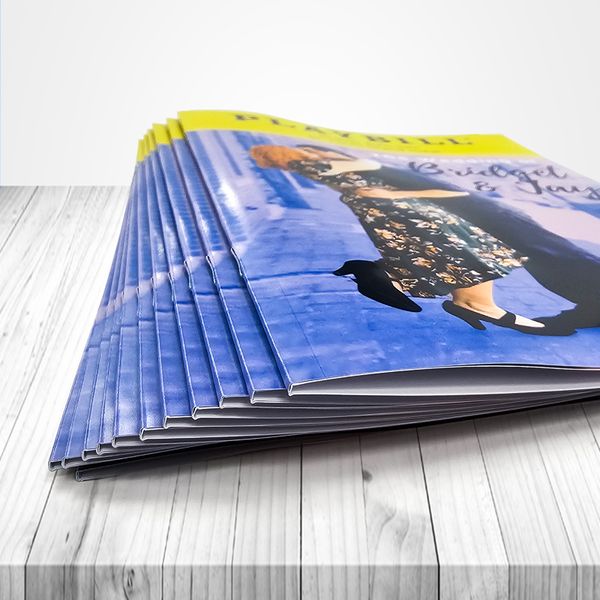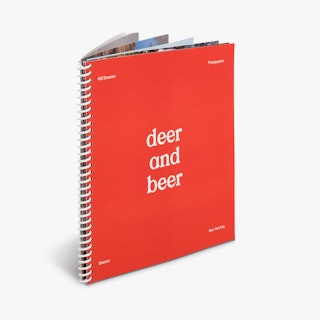The Crucial Overview to Recognizing Booklet Printing Options and Techniques
The procedure of brochure printing involves numerous factors to consider that can substantially affect the end product. From picking the proper style and size to recognizing the nuances of binding methods, each selection plays a crucial function. Additionally, aspects such as paper stock and printing strategies more affect the performance of the pamphlet. As one browses these choices, it comes to be crucial to grasp exactly how they adjoin and what that indicates for the overall end result.
Comprehending Booklet Dimensions and formats
When taking into consideration booklet printing, recognizing the different formats and dimensions available is necessary for achieving the preferred presentation. Brochures can be generated in various layouts, including saddle-stitched, spiral-bound, and perfect-bound, each offering distinct benefits. Common dimensions vary from conventional letter (8.5 x 11 inches) to smaller sized options like A5 (5.8 x 8.3 inches), permitting adaptability based on material and target audience.Selecting the proper dimension can influence both the design and viewers involvement. Larger sizes may match visually driven material, while smaller sized layouts may be much more user-friendly and portable. Furthermore, the variety of web pages influences the selection of binding method, as thicker brochures may need tougher bindings. Inevitably, understanding these aspects enables a much more tailored technique, making certain that the last item straightens with the intended message and aesthetic, enhancing the overall effectiveness of the communication.
Choosing the Right Paper Stock

Binding Methods: Options and Factors To Consider
When it concerns binding methods for pamphlets, a number of choices are available, each with distinctive benefits. Saddle stitch binding offers an affordable option for thinner brochures, while excellent binding strategies provide a more polished search for thicker publications. Wire-O binding stands apart for its toughness and convenience of usage, making it excellent for documents that require flexibility.
Saddle Stitch Binding
Saddle stitch binding provides a functional and economical remedy for constructing pamphlets, making it a prominent option among authors and organizations. This binding approach includes folding sheets of paper in half and stapling them along the fold line, creating a neat and organized look. Commonly ideal for brochures with a lower page matter, saddle sewing is optimal for magazines, brochures, and educational products. The simplicity of this technique permits fast production and is often preferred for advertising items or brief runs. It is vital to note that saddle stitch binding might not be suitable for thicker pamphlets, as the spinal column might not hold up under boosted weight. Overall, it continues to be a trustworthy option for several printing projects.
Perfect Binding Strategies
Perfect binding is a commonly made use of technique that gives a refined and expert coating to magazines and pamphlets. This approach involves gluing the web pages with each other at the spinal column making use of a strong adhesive, permitting a tidy edge and the capability to hold a bigger number of web pages contrasted to saddle stitching. Perfect binding is especially ideal for thicker booklets, such as directories and yearly reports, where a strong, level spine is preferred. Furthermore, it offers the option for a published cover that can be developed to boost aesthetic allure. Factors to consider such as page count, paper weight, and the meant usage of the brochure need to be taken right into account, as they can influence resilience and overall high quality.
Wire-O Binding Choices
Wire-O binding, understood for its toughness and adaptability, supplies an excellent option for booklets that require easy page transforming and a professional look. This binding method uses a collection of steel loopholes that hold web pages safely, enabling them to lie flat when open. It is particularly suitable for presentations, guidebooks, and magazines due to its robust nature. Wire-O binding is readily available in numerous colors and diameters, suiting various page counts and densities. Furthermore, it permits the inclusion of tabs and covers, improving the booklet's total visual. Considerations for Wire-O binding consist of the option of wire shade, the dimension of the loops, and the level of personalization desired, every one of which can exceptionally influence the end product's look and performance.
Digital vs. Offset Printing: Which Is Best for You?
When selecting a printing approach for brochures, comprehending the distinctions between digital and offset printing is important. Digital printing makes use of contemporary innovation to create top quality prints promptly and economically, making it perfect for brief runs or projects calling for quick turn-around times. It allows for modification, providing the capacity to print on-demand with very little waste.In comparison, balance out printing is a typical technique that masters producing big amounts with consistent top quality. It involves transferring ink from a plate to a rubber covering, then to the paper, which leads to vivid colors and exact information. Nevertheless, counter printing generally needs longer arrangement times and is more economical for bigger volumes.Ultimately, the choice between digital and offset printing depends upon job requirements, spending plan, and wanted quantity. For little, time-sensitive jobs, digital could be the ideal selection, while countered might be preferable for larger, top quality productions.
Designing Your Pamphlet: Tips and Ideal Practices
When creating a booklet, mindful attention to layout, font style selection, and shade use can significantly enhance its effectiveness. A well-structured layout overviews the visitor's eye, while suitable fonts assure readability and communicate the desired tone. In addition, efficient use shade can stimulate emotions and emphasize essential information, making the total style more impactful.
Picking the Right Design
How can one effectively select the best format for a brochure? First, it is crucial to examine the booklet's objective and target audience. A tidy, organized format enhances readability and involvement. Utilizing a grid system can assist in aligning aspects consistently, producing a professional appearance. In addition, incorporating aesthetic hierarchy via differing dimensions and positionings of photos and message can direct the reader's eye and emphasize vital details. It is likewise important to leave sufficient white room, which protects against overcrowding and enables far better focus. Finally, checking various layouts with mock-ups can supply understanding into how the style executes in real-world scenarios, guaranteeing that the last item fulfills both aesthetic and functional needs.
Picking Ideal Typefaces
An appropriate typeface can substantially enhance the total layout of a pamphlet, enhancing the format and enhancing the web content's message. The option of typefaces must take into consideration readability, specifically for body message, as it ensures the info comes to all visitors. Sans-serif fonts are frequently chosen for digital layouts, while serif typefaces can provide a standard feel in printed products. It's suggested to restrict font choices to two or 3 to preserve visual comprehensibility. In addition, font style size plays an important function; headings need to be distinct however not overwhelming, while body text must be comfy for reading. When picking font styles, positioning with the booklet's motif and target audience is important for reliable communication and aesthetic allure.
Efficient Usage of Shade
Color functions as a powerful device in booklet style, assisting and forming perceptions viewers emotions. It can evoke sensations of peace, trust fund, or excitement, depending upon the tones selected. Designers need to consider color theory concepts, guaranteeing that the selected scheme straightens with the booklet's message and target audience. For example, using warm colors like red and orange can produce necessity, while cooler tones like green and blue foster tranquility.Additionally, contrast plays a crucial duty; corresponding shades can boost readability and aesthetic appeal. Consistency in color explanation usage across pages further strengthens brand name identification and communication. Inevitably, reliable shade application not only catches interest however additionally reinforces the brochure's objective, making it an important element of effective design.
Finishing Touches: Coatings and Special Results
While many consider the web content and format of a brochure the most crucial elements, the ending up touches, such as layers and unique effects, play an important role in boosting its overall allure. Coatings can supply protection and resilience, ensuring that the brochure holds up against damage. Matte surfaces supply an advanced, non-reflective surface area, while glossy layers can make colors appear even more appealing and vibrant. Unique effects, like embossing or aluminum foil stamping, include a tactile measurement that can produce a remarkable perception. These techniques can highlight certain areas, accentuating crucial information or developing visual rate of interest. Additionally, UV finish can offer a high-shine coating that elevates the general look.Together, these finishing touches not only boost the booklet's visual yet likewise connect professionalism and reliability and focus to detail, eventually leaving a long-term influence on the over at this website viewers.
Expense Factors To Consider for Booklet Printing
Comprehending the numerous cost considerations for brochure printing is essential for companies and services intending to enhance their budgets. Secret factors affecting expenses consist of the option of binding, ink, and paper techniques. Higher high quality products, such as exceptional paper or specialized inks, typically enhance the general cost. Furthermore, the dimension and web page matter of the pamphlet play a substantial role; larger booklets require more resources and time to produce.Another important consideration is the printing technique, whether digital or offset, as each has its own pricing structure and suitability for different amounts. Businesses should also consider layout prices, which can differ based upon complexity and using expert services. Ultimately, shipping and handling costs can include to the total amount, especially for large orders. By assessing these elements, organizations can make informed decisions that straighten with their economic capacities while accomplishing the preferred quality in their published products.
Often Asked Concerns
What Are the Environmental Influences of Pamphlet Printing?
The environmental impacts of pamphlet printing consist of deforestation from paper production, carbon exhausts from transportation, and waste generation from discarded products - Booklet Printing. Lasting practices, such as using recycled paper and eco-friendly inks, can minimize these results
Exactly How Can I Ensure Shade Accuracy in My Pamphlet?
To ensure color precision in a brochure, one should make use of calibrated displays, utilize professional shade profiles, carry out test prints, and pick high-quality printing solutions that supply shade matching and proofing alternatives for ideal results.
What Is the Common Turnaround Time for Booklet Printing?
The regular turn-around time for brochure printing varies relying on the more helpful hints complexity and amount - Booklet Printing. Generally, it varies from a few days to two weeks, affected by elements such as publishing methods and completing requirements
Are There Minimum Order Quantities for Pamphlet Printing?

Can I Print Brochures in Numerous Languages?
Publishing pamphlets in multiple languages is possible. Many printing services provide choices for multilingual or multilingual designs, enabling for reliable interaction. Mindful planning warranties that create elements fit different languages without jeopardizing readability or appearances. In addition, variables such as paper supply and printing strategies more affect the efficiency of the brochure. When thinking about brochure printing, understanding the various formats and dimensions readily available is crucial for attaining the wanted presentation. When selecting a printing method for pamphlets, recognizing the distinctions between digital and counter printing is necessary. Furthermore, the size and page matter of the brochure play a significant role; bigger brochures need more sources and time to produce.Another crucial consideration is the printing strategy, whether electronic or offset, as each has its very own prices structure and viability for different quantities. The ecological impacts of pamphlet printing consist of deforestation from paper manufacturing, carbon discharges from transport, and waste generation from disposed of products.